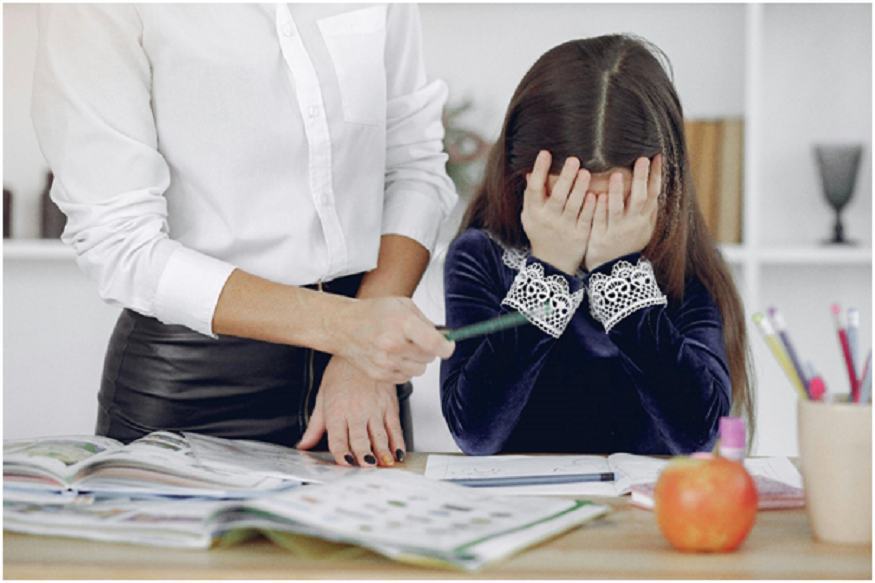Anxiety disorders rank among the most common mental health conditions worldwide, making it crucial to address them early, especially in school-aged children. According to the World Health Organization, about 15% of children experience anxiety disorders, which can profoundly impact their emotional and academic well-being.
However, anxiety is often left undiagnosed because it manifests differently in children than in adults. Younger kids might express anxiety through physical symptoms like stomach-aches or behavioural issues like acting out, while teenagers might experience panic attacks or avoid social situations.
Recognizing these signs is vital, and schools are uniquely positioned to help in this regard. Teachers can play a critical role in identifying and addressing anxiety by promoting regular screenings. In fostering an environment that supports mental health awareness, teachers help guide parents and students toward necessary resources and interventions.
Understanding Anxiety in Students: An Overview
Anxiety disorders rank as the most common mental health issues facing youth worldwide. Surprisingly, up to 15% of school-age children are affected by these disorders, yet many go unnoticed. The impact of untreated anxiety can stretch from minor hiccups in daily life to significant obstacles in education and personal development.
- Recognizing Anxiety Symptoms in Different Age Groups
Children and teens often display anxiety differently than adults. For instance, younger children might express their anxiety through physical symptoms like stomach-aches or disruptive behaviour in class. Teens, on the other hand, might avoid social events or even experience panic attacks. Recognizing these age-specific symptoms can guide teachers and caregivers in providing the right support.
- Importance of Early Detection and Screening
Early detection of anxiety can transform a student’s life, leading them toward healthy coping mechanisms and better outcomes in school and beyond. Screening tools can help identify potential issues early, providing a pathway to necessary support and interventions. Schools thus play a pivotal role in fostering a culture that prioritizes mental well-being and timely intervention.
The Teacher’s Role in Identifying Anxiety
Let’s get to know what are the roles of teachers in identifying anxiety in students:
- Observing Behavioural and Emotional Indicators
Teachers are in a unique position to observe students daily. Signs of anxiety, such as sudden changes in behaviour, persistent sadness, or withdrawal from peers, can indicate underlying issues. Teachers who are equipped to spot these clues can initiate further evaluation and support.
- Importance of Training in Mental Health Awareness
To truly make a difference, teachers can benefit from specific training in mental health awareness. Programs like the certificate in child counselling for teachers, equip educators with the skills needed to identify and support students dealing with anxiety. With the right training, teachers can confidently guide students and provide them with the necessary resources.
- Creating a Supportive Environment for Students
A supportive classroom can be a safe haven for students battling anxiety. Teachers can cultivate an environment that encourages open communication and emphasizes resilience. By making mental health a priority, teachers not only enhance student well-being but also enrich the overall learning experience. A positive setting aids in reducing stigma and empowers students to seek help when needed.
Strategies for Teachers to Encourage Anxiety Screening
Let’s get to know some of the effective strategies for teachers to encourage anxiety screening to their students:
- Implementing Screening Tools and Techniques
Teachers can make a significant impact by utilizing screening tools to identify anxiety in students. Schools often provide these tools to help teachers assess a student’s mental well-being. Creating an anonymous questionnaire can encourage honesty among students, as they may feel more comfortable sharing their true experiences without fear of judgment.
These questions might touch on their sleeping habits, mood, social interactions, and overall emotional state. By doing so, teachers can pinpoint patterns that may indicate anxiety and suggest appropriate follow-ups.
- Educating Students and Parents about Mental Health
Educating both students and their parents on mental health is crucial in creating an informed and supportive environment. Teachers should organize workshops and informational sessions that demystify anxiety and highlight the importance of early detection and screening. This education empowers students to articulate their feelings and seek assistance when necessary.
Meanwhile, parents become more equipped to recognize warning signs and provide support at home. Those teachers who have pursued courses like certificate in child counselling for teachers, can bridge the gap between home and school, facilitating open communication and ongoing discussion about mental well-being.
- Promoting Resilience and Positive Communication
Fostering resilience in students is a proactive approach to minimizing the impact of anxiety. Teachers can implement activities and lessons that build emotional strength and self-awareness. Creating a classroom environment that encourages positive communication is key.
By promoting open dialogue, students are more likely to express their concerns and fears in a safe setting. Teachers can guide students in developing coping strategies and resilience, laying the groundwork for a supportive, anxiety-informed community. This nurturing environment not only aids student’s currently experiencing anxiety but also prepares others to handle stress and emotional challenges in the future.
Final Thoughts
The role of teachers in promoting anxiety screening is crucial in today’s educational landscape. By recognizing anxiety’s unique manifestations in students, teachers can provide an invaluable support system. Equipped with the right training by pursuing courses like an online certificate in counselling courses for teachers, every educator can detect early signs of anxiety and guide students and their families toward effective intervention options. Screening for anxiety ensures students are offered the necessary resources to foster resilience and emotional health.
Moreover, a collaborative effort between teachers, parents, and the educational institution is essential. Encouraging dialogue about mental health and implementing regular screenings create an environment where students feel safe and supported. Early detection and treatment can significantly reduce the risk of more severe mental health issues in the future, paving the way for happier and healthier students.






